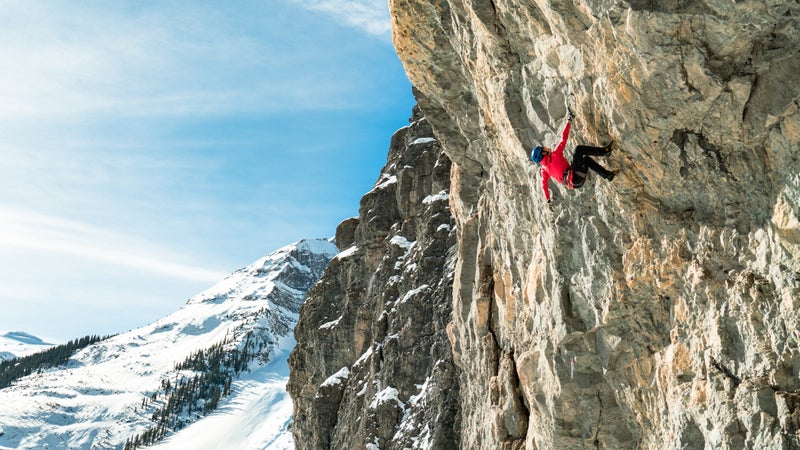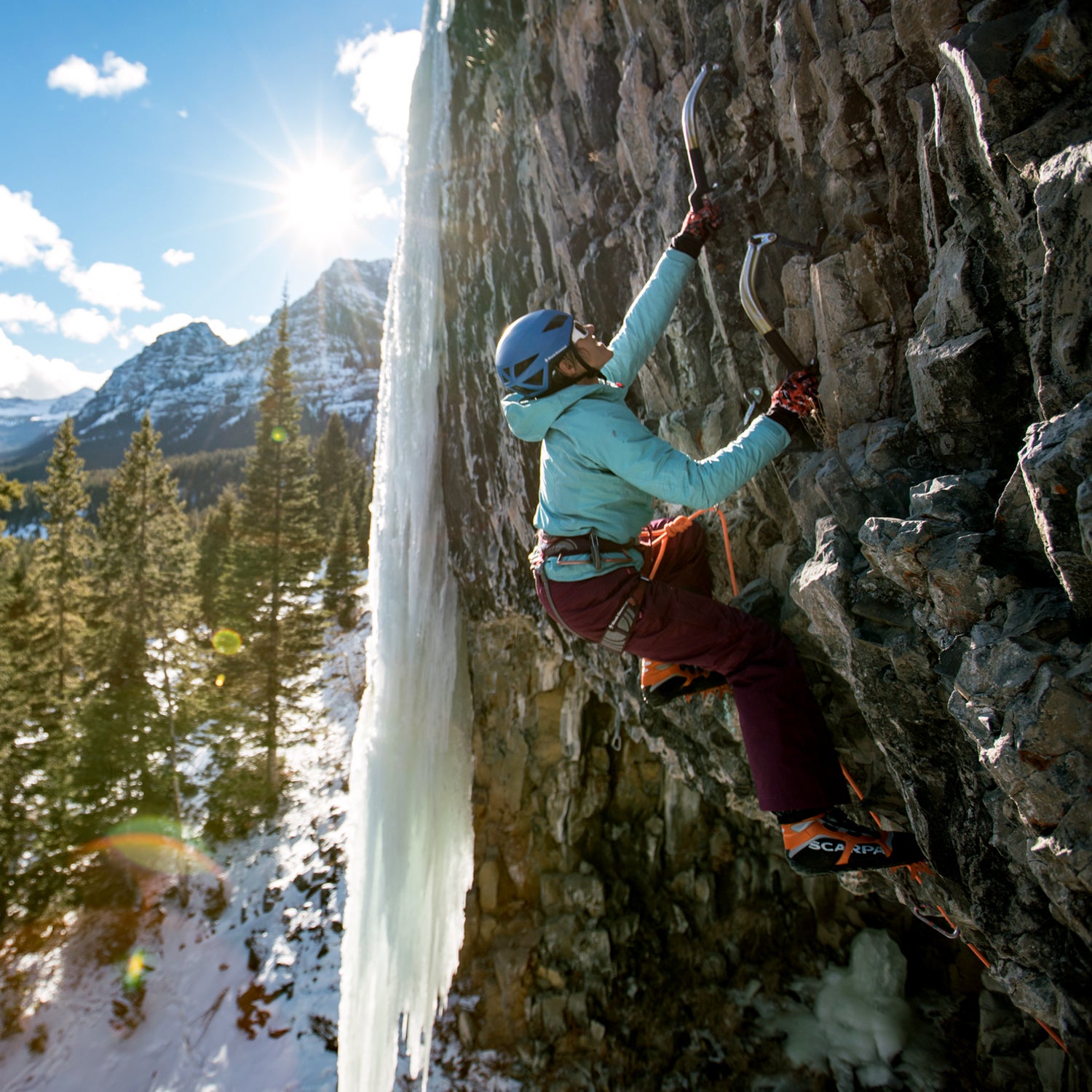In November, climber topped out on The Lightning, a long and steep route in Vail, Colorado's Fang Amphitheater whose central feature in the winter is an ice pillar about 120 feet high, flanked by a rock wall and ridges of huge, jagged icicles. Bono had to contort and hang upside down while digging ice picks into a literal ceiling of rock—a mashup of rock and ice climbing with the help of ice tools known as mixed climbing. This made Bono the first American woman to climb an M13 grade, the mixed climbing version of a V16 bouldering problem. Two weeks later, Canadian became the first North American woman to climb M14 when she sent The Mustang P-51, a grueling horizontal traverse that’s considered one of the hardest mixed routes in the world.
These were huge accomplishments, but for the most part they only received air time in the blogs of climbing-specific magazines. But an all-women team of North American climbers and filmmakers think the sport deserves more attention—not just because it’s a demanding and graceful iteration of climbing, but also because of its potential as one of the most gender-equal playing fields in action sports.

The team behind a forthcoming documentary, , says the leading edge of mixed climbing is changing fast. Mixed climbing, as a sport, is only 20 years old. American climber Jeff Lowe invented it in 1994 when he climbed Vail’s Octopussy, and was the first person to use his ice tools to climb a route that was both rock and ice. It opened up a whole new world of routes that would have been too difficult to climb using rock or ice techniques alone. Since then it’s grown in fits and spurts. In the early 2000's, for example, “you could really feel the energy in the sport,” Canadian mixed climber Raphael Slawinksi . “New crags were being discovered, new routes were going up.” In 2014, Will Gadd brought new attention to the sport when he in Canada's Helmcken Falls. Mixed climber says there’s a big surge now, especially among women. For instance, this year 11 women competed at the Ouray Ice Fest, up from two in 2012. And the women involved are putting up routes that are almost as hard as what the dudes are doing.”
“On top of the fact that it’s a weird burly sport that not a lot of people do, here’s a group of women who are keeping up with the men.”
“On top of the fact that it’s a weird burly sport that not a lot of people do, here’s a group of women who are keeping up with the men,” says Anne Banister, the producer of Mixtress. She says the potential of the sport's top women is what the filmmakers are trying to convey. “Mixed climbing lends itself much more to women,” Banister says. “It’s graceful, tools give women a height advantage, and we have flexibility and weight-to-strength benefits.” All that’s missing is a bigger pool of women climbers competing and bringing more attention to the sport.
Glanc, a mountain guide known for winning competitions like the and putting up first ascents, hatched the idea in September. She was frustrated by the lack of exposure her fellow climbers were getting and, hoping to capture the current momentum, set out to find athletes and filmmakers who could help make the film within a year. The team successfully raised $13,333 on Kickstarter in December.
“It’s a fly-by-the-seat-of-your-pants production,” says Banister, herself a mixed climber and filmmaker. The team has been in Bozeman and Ouray for both places’ namesake ice festivals; next up is Vail to film with Bono, and Canada to try to catch Hueniken, before wrapping up filming this month. The plan is to put together an edit by next year.
The film will focus on the best North American women in the sport. There's Kitty Calhoun, an early advocate of both rock and ice climbing in the 80s who put up big alpine ascents from Kyrgyzstan to Alaska’s Kichatna Range. There's Kendra Stritch, a speed climber who's working to up the competitive side of mixed climbing by getting an American team together for the 2017 . And there are the progressive climbers like Bono and Hueniken who are taking on the toughest, newest routes. By highlighting those climbers, the filmmakers hope to show the depth and breadth of the sport, and how much room it has to grow. “We’re looking at who is going to step out next,” Glanc says. “We’re putting out a call to action.”
She and Banister say they want the film to appeal to climbers and non-climbers, men and women—one of their main goals is to break down some of the mental blocks keeping people from giving mixed climbing a try. Glanc thinks that there are emotional and financial barriers around getting into a sport that involves an investment in ice tools along with standard climbing gear, plus the special techniques required. Still, they’re hopeful that they’ll find a good audience when the film’s ready.
“We’re psyched that people seem to be rallying around it,” Banister says. “People keep saying this is a film that needs to be made. They say, ‘Nobody is talking about mixed climbing, nobody is talking about the women.’ And a lot of that feedback was from men.”


